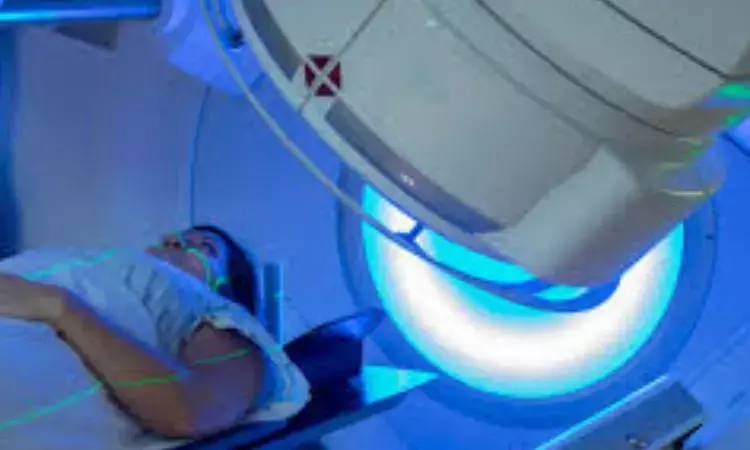- Home
- Medical news & Guidelines
- Anesthesiology
- Cardiology and CTVS
- Critical Care
- Dentistry
- Dermatology
- Diabetes and Endocrinology
- ENT
- Gastroenterology
- Medicine
- Nephrology
- Neurology
- Obstretics-Gynaecology
- Oncology
- Ophthalmology
- Orthopaedics
- Pediatrics-Neonatology
- Psychiatry
- Pulmonology
- Radiology
- Surgery
- Urology
- Laboratory Medicine
- Diet
- Nursing
- Paramedical
- Physiotherapy
- Health news
- Fact Check
- Bone Health Fact Check
- Brain Health Fact Check
- Cancer Related Fact Check
- Child Care Fact Check
- Dental and oral health fact check
- Diabetes and metabolic health fact check
- Diet and Nutrition Fact Check
- Eye and ENT Care Fact Check
- Fitness fact check
- Gut health fact check
- Heart health fact check
- Kidney health fact check
- Medical education fact check
- Men's health fact check
- Respiratory fact check
- Skin and hair care fact check
- Vaccine and Immunization fact check
- Women's health fact check
- AYUSH
- State News
- Andaman and Nicobar Islands
- Andhra Pradesh
- Arunachal Pradesh
- Assam
- Bihar
- Chandigarh
- Chattisgarh
- Dadra and Nagar Haveli
- Daman and Diu
- Delhi
- Goa
- Gujarat
- Haryana
- Himachal Pradesh
- Jammu & Kashmir
- Jharkhand
- Karnataka
- Kerala
- Ladakh
- Lakshadweep
- Madhya Pradesh
- Maharashtra
- Manipur
- Meghalaya
- Mizoram
- Nagaland
- Odisha
- Puducherry
- Punjab
- Rajasthan
- Sikkim
- Tamil Nadu
- Telangana
- Tripura
- Uttar Pradesh
- Uttrakhand
- West Bengal
- Medical Education
- Industry
Patients subjected to CNS-radiotherapy in childhood prone to Radiation-induced meningiomas later

Patients who underwent CNS-radiotherapy in childhood for any condition have an increased risk of developing secondary brain tumors such as radiation-induced meningiomas (RIMs), shows a recent study published in Brain and Spine journal.
Meningiomas are the most common primary brain tumors in adults and represent almost one-third of all primary tumors of the central neural system (CNS). Various risk factors have been blamed for their development, like ionizing radiation (therapeutic, diagnostic, or random exposure), hormonal factors, and genetic predilection syndromes.
Indeed, the effects of ionizing radiation on intracranial meningioma growth were first studied by Munk in 1969, and since then, many researchers have linked radiation exposure with the development of different types of cerebral tumors. One of the main causing factors of meningiomas is radiation, hence the amount of radiation and the site of it play a significant role in the side-effects of it, like the formation of meningiomas
In the international bibliography, meningiomas occurring within a previously radiated field after a defined latency period are being called “Radiation-Induced Meningiomas (RIM)”
For a tumor to be considered Radiation-Induced Meningioma, it should be formed within the irradiated field, appear with different histological characteristics from other previous tumors,
at least five years should have elapsed between irradiation and meningioma’s appearance, it should have been absent during irradiation, patient should not have a metastatic tumor, and
the incidence of neurofibromatosis type II should be excluded.
A retrospective study was undertaken by Banos et al to investigate the association of CNS irradiation during childhood with the development of meningioma in adult patients, managed at the Department of Neurosurgery of ‘Attikon’ General University Hospital, from January 2012 to September 2022.l, in which they examined the cases of thirteen patients with radiation-induced meningioma (RIM) who were diagnosed and treated in the neurosurgical department. These patients had been irradiated during their childhood for paediatric cancer.
Their study concluded that patients who underwent CNS radiation therapy in childhood for any condition had an increased risk of developing in adulthood secondary brain tumors -benign or malignant-such as radiation-induced meningiomas. The RIMs resembled sporadic meningiomas in symptomatology, location, treatment, and histological grade. They also advice that long-term follow-up and regular check-ups are recommended in irradiated patients due to the short latency period from irradiation to RIM development, as these patients are younger than those with sporadic meningiomas cases. Further research is needed to identify the regular manner in which follow-up should be suggested in such patients.
Reference
Stamatios Banos a, Mary Solou a, Ioannis Ydreos a, Evangelos K. Papadopoulos a, Georgios Savvanis a, Anastasios A. Politis a, Lampis C. Stavrinou a, Maria M. Gavra b, Efstathios J. Boviatsis a
Brain and Spine
Volume 3, 2023, 101719
https://doi.org/10.1016/j.bas.2023.101719
MBBS, DrNB Neurosurgery
Krishna Shah, MBBS, DrNB Neurosurgery. She did her MBBS from GMC, Jamnagar, and there after did direct 6 Year DrNB Neurosurgery from Sir Ganga Ram Hospital, Delhi. Her interests lie in Brain and Spine surgery, Neurological disorders, minimally invasive surgeries, Endoscopic brain and spine procedures, as well as research.
Dr Kamal Kant Kohli-MBBS, DTCD- a chest specialist with more than 30 years of practice and a flair for writing clinical articles, Dr Kamal Kant Kohli joined Medical Dialogues as a Chief Editor of Medical News. Besides writing articles, as an editor, he proofreads and verifies all the medical content published on Medical Dialogues including those coming from journals, studies,medical conferences,guidelines etc. Email: drkohli@medicaldialogues.in. Contact no. 011-43720751


